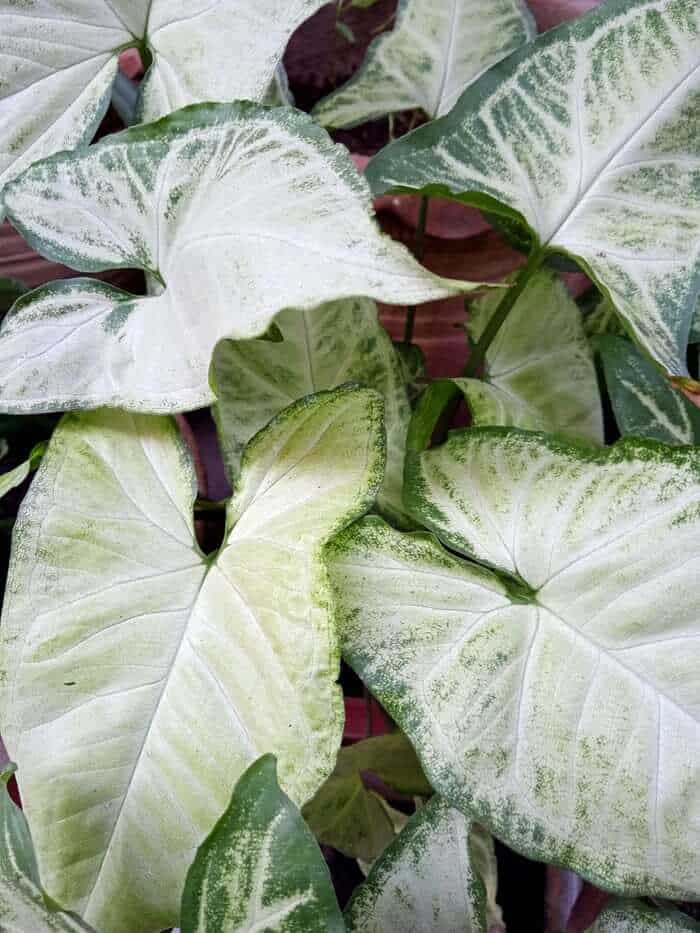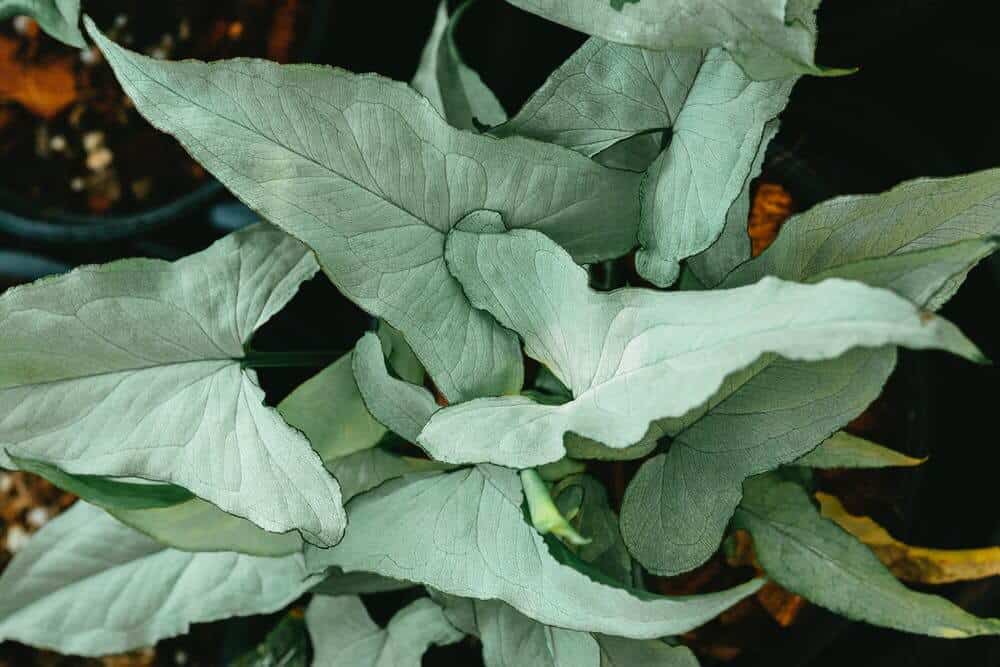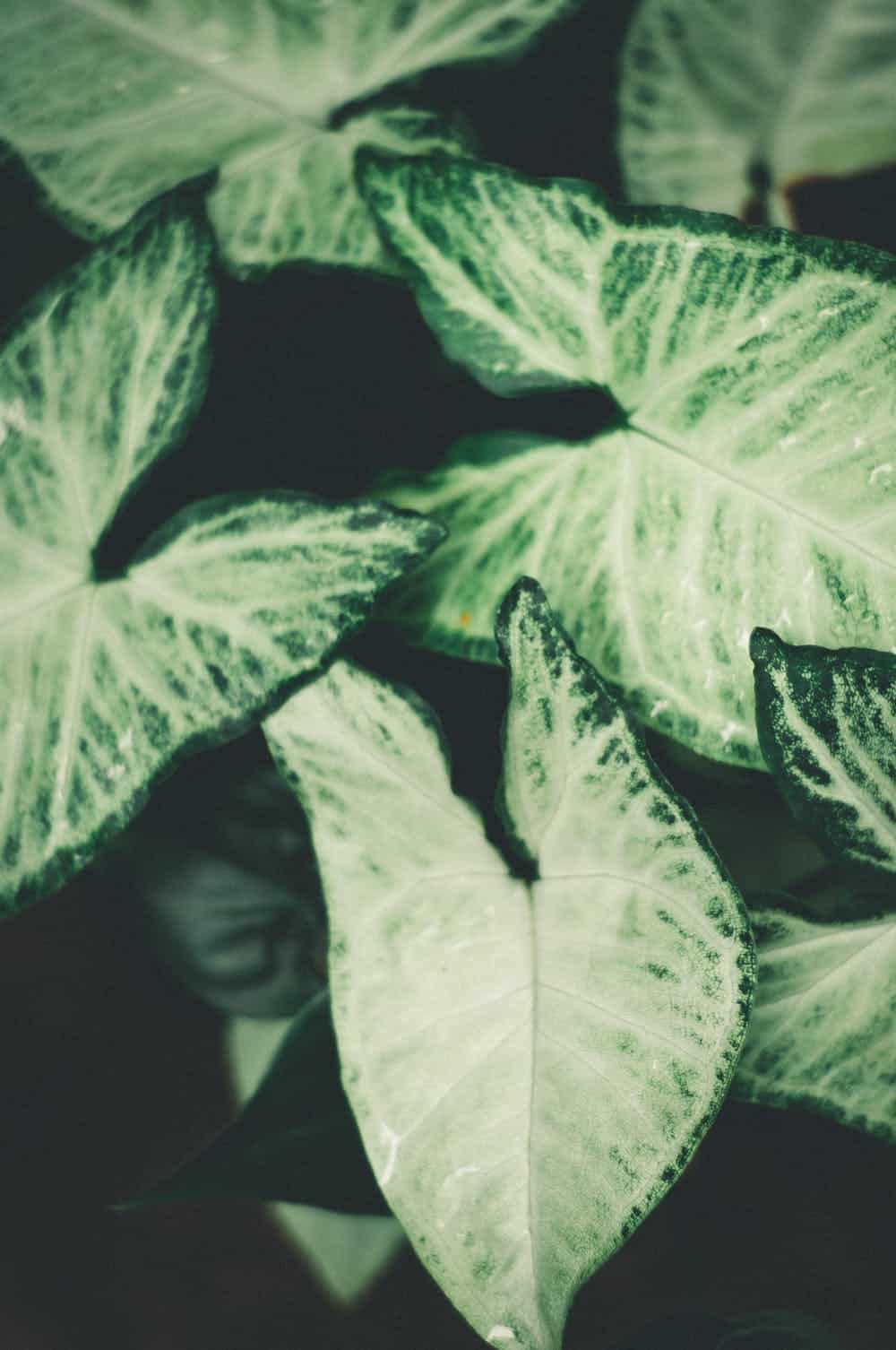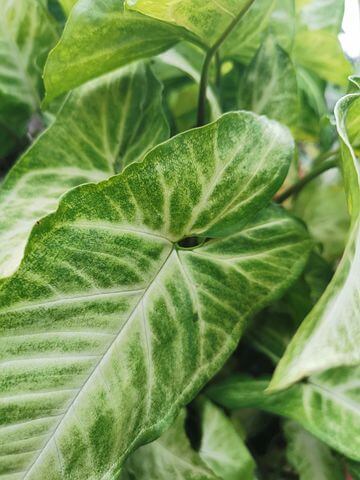Last Updated on May 28, 2023 by a Friendly Gardener
Botanically named the Syngonium podophyllum, the Arrowhead Plant belongs to the Araceae family. It is a native of the South and Central American tropical rain forests. Known by the popular name of “Arrowhead”, this is due to the shape of the plant’s foliage which appears as green spades.
The Arrowhead is a rapidly growing plant. When healthy, it boasts a lush appearance and produces new foliage continually in various tints of green with generous white variegation. Younger Arrowhead plants have bright stems that grow upward, while mature plants will be characterized by vines that climb or trail with generously sized foliage. Leaves will generally vary quite a bit in hue in relation to the plant’s age.
In some environments, the Arrowhead can be cultivated as an outdoor plant. It is successfully cultivated year-round indoors as a houseplant. One great thing about the Arrowhead is that it does not need much care or attention making it an ideal choice for beginners to indoor gardening.
Arrowhead Plant Care

The Arrowhead is fantastically easy to take care of. It asks very little of its owners much like its cousin, the philodendron. This plant is a true climber when found in its natural habitat. You’ll find it high on trees having ascended without the slightest difficulty.
As a houseplant, the Arrowhead makes a stunning trailing plant, especially when positioned on higher shelves or in hanging baskets. You can also provide your plant with a pole, a trellis, or a moss stick to attach to. If you prefer a bushier plant that grows upright, just trim away any new growth.
The Arrowhead enjoys warmth, lots of bright light, and a good dose of humidity. They are a lovely decorative plant for sunrooms and can also be easily cultivated in greenhouses. With the proper environmental conditions, your plant will produce lush foliage in a variety of green hues.
Soil
The Arrowhead plant does best in a soil-based growing medium. Surprisingly these vines do risk root rot if left in soggy soil, so a well-draining soil bed is mandatory and a container with adequate drainage holes. Pots made of clay or terracotta help by wicking away any excess moisture. Soil pH levels should measure between 5.5 and 6.5.
Light

The Arrowhead plant does not like or do well in direct sun, but it does need bright light to thrive. Filtered light is ideal to avoid direct sun rays from bleaching out the leaves or scorching them. Darker green Arrowhead varieties do best when protected with partial shade.
Water and Humidity
Water your Arrowhead plant on a regular schedule during the spring and summer in the growing season. Reduce watering in the winter. Your plant’s soil bed should be allowed to dry out a bit between waterings, however, never completely. Soil beds should retain moisture so that they remain moist but not wet.
The Arrowhead plant does tolerate average house humidity levels but thrives in higher humidity levels like those found in a bathroom or kitchen where humidity is naturally higher.
The surrounding humidity can be increased by grouping plants together. You can also use a small space humidifier. Another alternative is the pebble tray. Position a tray filled with pebbles and add water. Place your Arrowhead plant’s container on top of this tray. This will increase localized humidity around the plant. The container must sit well above the waterline. Containers placed on pebble trays should not have direct contact with the water as this can contribute to root rot through the absorption of water through drainage holes.
The simplest option is to position a receptacle filled with water in the plant’s vicinity. Daily misting will also assist with humidity levels.
Temperature
The Arrowhead prefers room temperatures that measure above 60° Fahrenheit.
Feeding Your Arrowhead

Feed your plant monthly using a liquid fertilizer during spring, summer, and fall. Interrupt feeding in the winter.
Pruning
For bushy Arrowhead plants, trim off older vines at the beginning of summer. You should prune to about 6 inches from the soil bed. Do not worry if it looks like you have given your plant a radical haircut as they are aggressive growers that develop vines very rapidly.
Repotting

Whether you repot and how often you do so will depend on how much you want your plant to grow and expand. For large vines, repot yearly. For more medium-sized vines, repot every other year to avoid your plant from becoming root-bound.
Arrowhead Plant Propagation
The arrowhead can be easily propagated using stem cuttings. Do this in the spring and summer seasons. If your mother plant’s vines have developed aerial roots, cut a section with these roots attached.
Place cuttings in a jar of water. Newly formed roots should appear after a couple of weeks. Change the water every several days. Be patient allowing roots to strengthen. After approximately one month, transplant your new plant into the soil.
Arrowhead Toxicity

The American Society for the Prevention of Cruelty to Animals-ASPCA informs that all parts of this plant are toxic to cats and dogs. The plant contains poisonous that irritates the skin and burns in the mouth when chewed or swallowed. Even if this plant is not lethal, it should Arrowhead be kept out of the reach of family pets. Symptoms to be on the lookout for include:
- Vomiting
- Swollen tongue, lips, or mouth area
- Difficulty when swallowing
- Pawing at the area of the mouth
- Mouth lesions
- Irritation and pain connected to the mouth
- A lack of appetite
- Excessive salivation
If you suspect ingestion of the Arrowhead vine, contact your veterinarian for assistance.
Pests, Diseases, and Problems
The Arrowhead is generally resistant to pests but all the same may host aphids, spider mites, mealybugs, and scale, often which have migrated from another houseplant. If you notice evidence of an infestation, remove insects manually where possible and apply Neem oil or insecticidal soap.
Foliage that turns yellow can indicate either low light or overwatering. If the foliage is old, yellowing may be a normal part of the aging process. Low humidity can trigger brown or yellow foliage.
Foliage and vines that droop indicate underwatering. When your plant’s soil bed dries completely, soak your plant in a tub or sink. You can fill a sink with three to four inches of water and allow the Arrowhead to soak it up for 45 minutes. When the water arrives at the top of the soil, empty the sink, and drain the plant before returning it to its preferred spot.
Conclusion

The Arrowhead plant is an easy-care houseplant with lush, variegated foliage. It is a beautiful addition to any décor.

